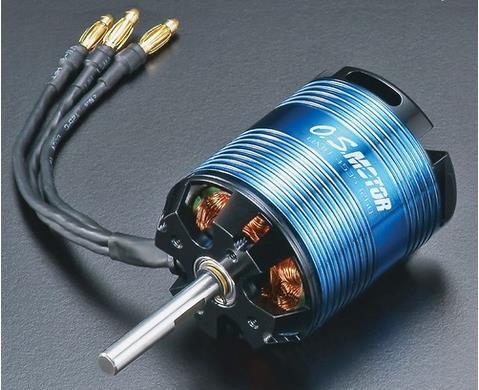
Electric motors: brushed vs. brushless
There are brushed and brushless electric motors – what's the difference? And what’s more suitable for you?
Brushed and brushless motors both use electromagnetic induction. But there are significant differences between these types of motors and what they're used for. Typical applications for brushed direct current (DC) motors are motorised toys, household appliances or PC peripherals. Brushless motors are often installed in computer hard drives, mechanical media players, fans for electronic components, wireless power tools or direct-drive turntables. And, of course, both play a part in the RC world.
Brushed motors
Electric motors function by generating magnetic fields whereby electromotive repulsion and attraction forces a rotor to continually turn. In a brushed motor, fixed magnets are arranged on both sides of a rotating electromagnet – one facing a positive pole and the other facing a negative pole. The electromagnet consists of a series of coils of wire, the so-called commutator. When current is passed through these coils, they generate a magnetic field that is first repelled and then attracted again by the fixed magnets. The current is transferred to the coils of the commutator by metal brushes that turn with the rotor. Enough theory. What are advantages and disadvantages of brushed motors?
Advantages of brushed motors
Brushed motors are usually low cost and reliable. They also offer simple two-wire control and require fairly simple control or no control at all in fixed-speed designs. As they need few or no external components, brushed motors are ideal for rough environments.
Disadvantages of brushed motors
One disadvantage is that they have a fairly short lifespan. As they are in perpetual physical contact with the shaft, brushes and commutators wear out and stop working after some time. The brushes in expensive motors can be replaced, but in most cases, you’ll have to get rid of the motor. Brush motors can also have trouble at high speeds, as they can’t handle power transmission in this range.
Brushless motors
As the name suggests, this type of electric motor has no metal brushes. In brushless motors, the rotor comes with fixed magnets with different poles. Several coils are installed in the surrounding housing, which generate their own magnetic field through the electric current. This attracts and repels the fixed magnets of the rotor, making the rotor turn. For such a motor to function, the coils of the commutator need to be synchronised with the fixed magnets, making sure the magnetic fields are always opposite each other. This requires an electronic controller or microprocessor that coordinates the power supply to each electromagnetic coil. Sounds complicated already – and that's just a rough explanation. Let’s take a look at the characteristics of a brushless motor.
Advantages of brushless motors
One of the greatest advantages is that there is no physical connection between the rotor and the commutator, as is the case with brushed motors. Brushless motors therefore require less or no maintenance, don't wear out as quickly and can be operated at higher speeds. On top of this, these types of electric motors are better at maintaining speeds. Moreover, they're not as noisy. In some cases, depending on what the motor is used for, this can be key.
Disadvantages of brushless motors
Unfortunately, nothing is perfect and even brushless motors have disadvantages. For one, manufacturing costs are much higher than with brushed motors. In addition, they come with a complex control system. Without this, the motor doesn't move at all. These controls can cost almost as much as the electric motor itself. All in all, quite an investment.
Verdict
All in all, a brushed motor is the ideal choice for beginners. An RC car requires much less maintenance than a brushless motor (although it's the control rather than the motor itself that is most likely to require maintenance). A brushed motor lets you reach high speeds, don't worry. For experienced enthusiasts, a brushless motor usually means better quality and an improved driving experience with higher revs. So a brushless motor is the better choice for any advanced racers among you.







